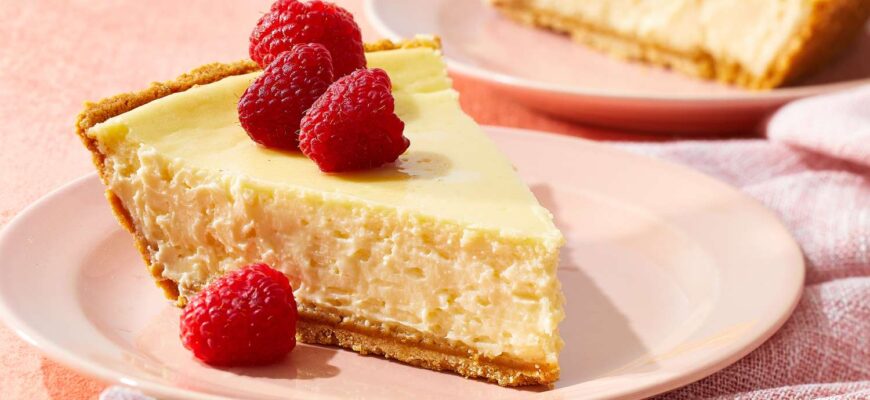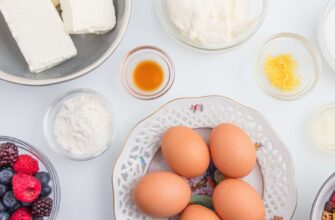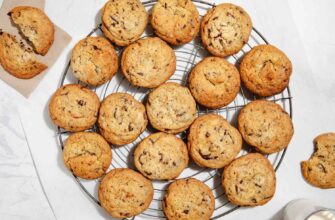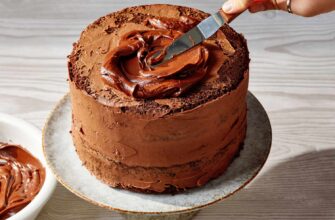Close
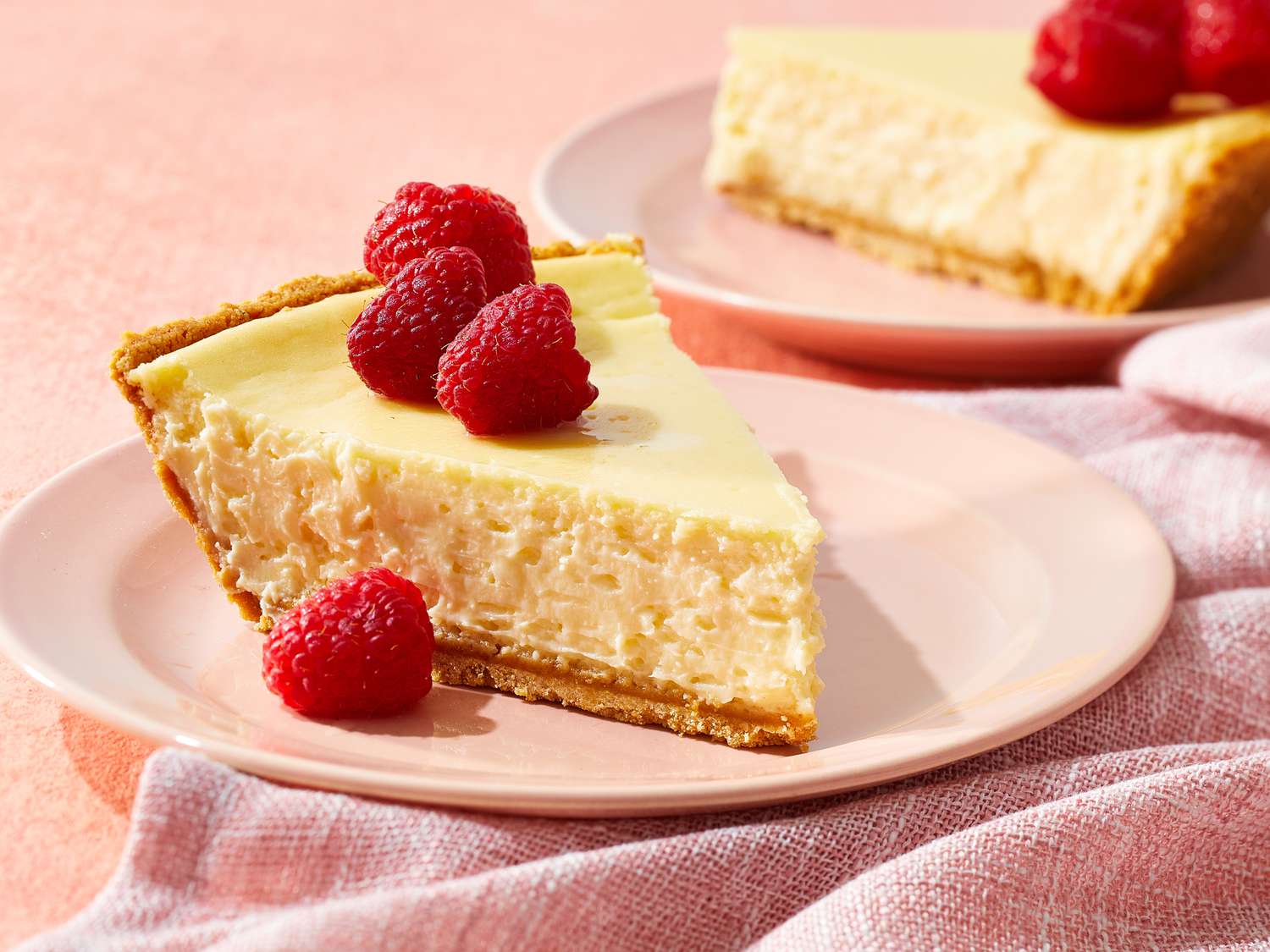
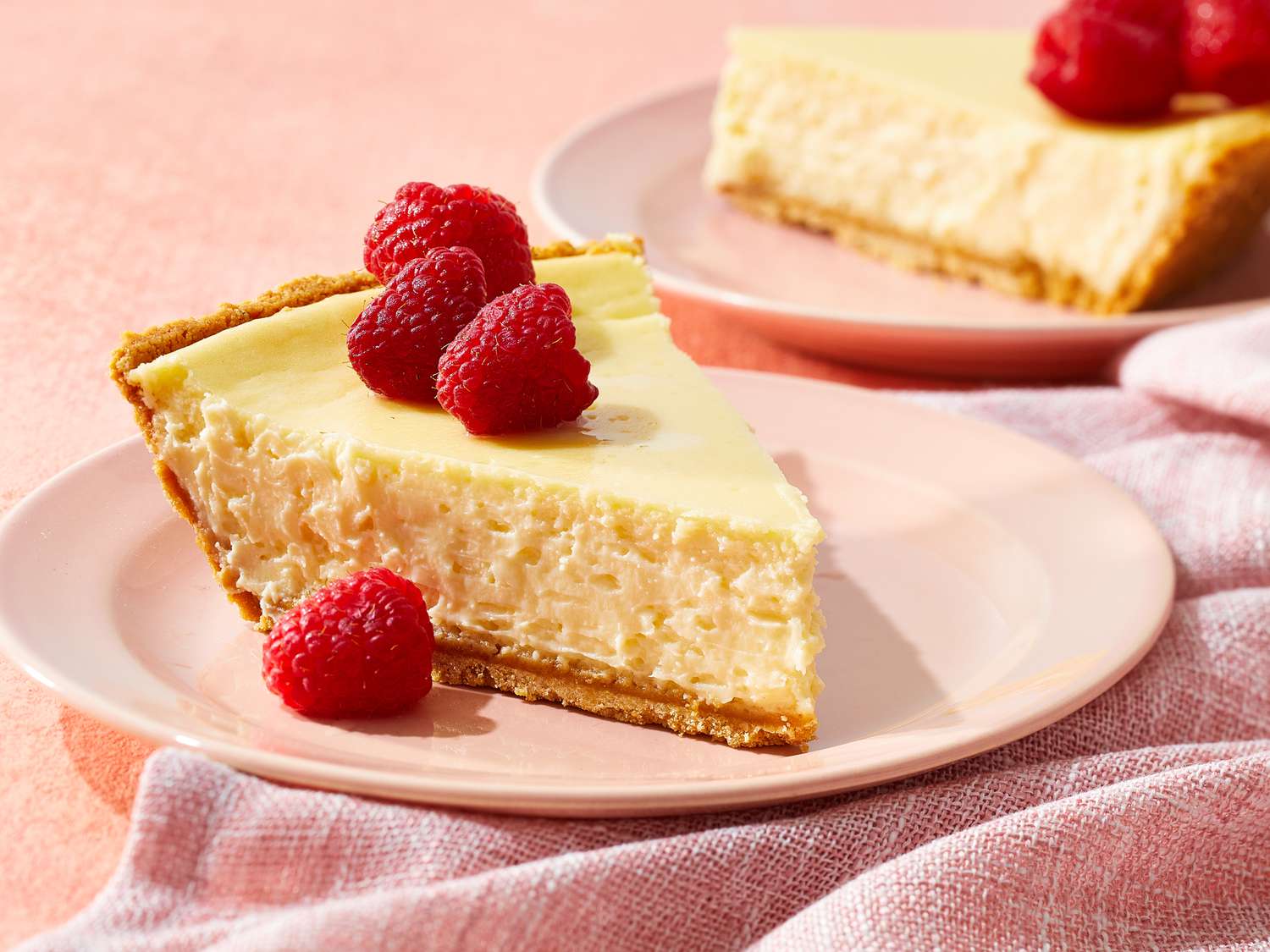
Photo:
Dotdash Meredith Food Studios
Cheesecakes are decadent, indulgent desserts that work for any celebration. They’re relatively easy desserts to prepare, but if you’ve never made one, they can seem complicated and a bit intimidating. We’ve all seen the options at The Cheesecake Factory.
There are a few tricks of the trade that can make a big difference, so I asked the experts in the Allrecipes Test Kitchen for some cheesecake-baking advice. They offered one easy tip that works like a water bath, but without all the effort of the traditional method.
The Secret to Keeping Cheesecake Moist
Water is the surest way to keep a cheesecake from drying out. Plenty of cheesecake connoisseurs know about water baths, and this still stands as one of the best ways to keep a cheesecake from cracking.
A water bath can be tricky if you’ve never used one. You line a springform pan with aluminum foil, then fill with your crust and batter in the pan and place this inside a large dish like a 9×13 with an inch of water. If you’re not careful, water can seep into the cheesecake and ruin the dessert.
“My favorite method in place of a water bath is to place an oven-safe skillet on the rack underneath the cheesecake,” says Culinary Specialist Emily Nienhaus, and fill it with hot water. “The steam will act like a water bath without all the fuss.”
The effect is almost identical to a traditional water bath. Steam still fills the oven when you add a skillet of hot water on the rack below the cheesecake, but there’s no risk of soaking your cheesecake. The water should be hot, almost boiling, because the goal is to produce steam.


Dotdash Meredith Food Studios
Other Tips for a Perfect Cheesecake
Water is not the only way to produce a moist cheesecake. Here are a few other tips to turn out a great recipe:
- Don’t over beat the batter. Eggs should be the last ingredient to incorporate into a cheesecake mix. Add them one at a time, beating on low until each is combined. Do not continue to beat the ingredients once the eggs are fully combined as air will form in the batter and increase the likelihood for cracks.
- Use room temperature ingredients. Make sure to remove your ingredients from the fridge before you start preparing the recipe. Temperature differences with ingredients can cause the recipe to cook unevenly and risk cracking.
- Cool the cheesecake slowly. Speaking of differences in temperature, taking a cheesecake from a hot environment to a cooler one can cause the cheesecake to change by cracking or shrinking. You can cool the cheesecake slowly by leaving the cheesecake and the water bath in the oven, but turning the oven off and cracking the door. The environment will stay humid, but the heat will slowly escape. Remove from the oven after about 30 minutes to one hour and continue to cool the cake at room temperature.
Was this page helpful?
Thanks for your feedback!
Tell us why!
Other
Submit
